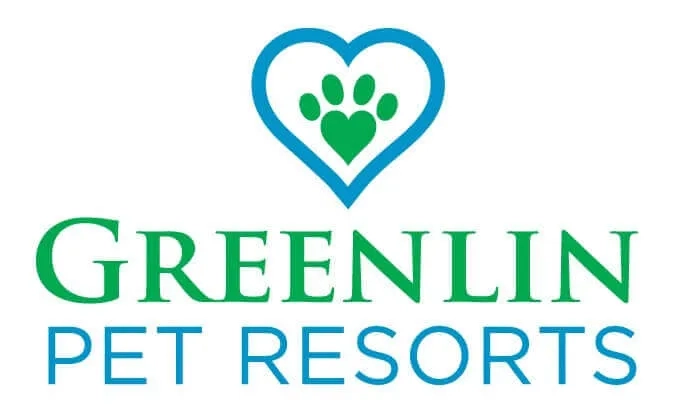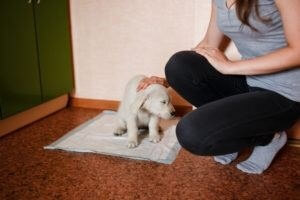How to House Train a Puppy
House-training, housebreaking, or potty training – no matter what you call it all pet parents want to teach their new puppy not to relieve themselves inside the home. Among the top reasons that pet parents give their pets up to shelters annually – is frustrations with recurring accidents in the home. Though tedious and time consuming an early investment of time and consistency in beginning stages will save you from future frustrations allowing you to enjoy a deeper bond and quite possibly saving their life.
The number one error most new pet parents in the early stages of house-training are related to confinement. Anxious to get them through the front door and spoil them with a life of luxury -often giving them free roam of the entire house. Experts recommend confining the puppy to a defined and limited space; a crate, exercise pen, a specific room in the home or monitored closely on a leash by the pet parent. As your puppy learns that he/she needs to go outside to do their business, very gradually more freedom can be given to roam larger areas inside the home.
The second biggest mistake is related to inconsistent routines. Dogs need and crave structure and routines in their lives to meet all of their primary routines; elimination, food, water, and exercise. Establishing consistent routines should be started from the beginning. Create a time schedule that works for your family and your pet and follow it closely.
6 Tips for Successfully House Training Your Puppy
- Keep the puppy on a regular feeding schedule and take away his food between meals.
- Take puppy out to eliminate first thing in the morning and then once every 30 minutes to an hour. Also, always take him outside after meals or when he wakes from a nap. Make sure he goes out the last thing at night and before he’s left alone.
- Take the puppy to the same spot each time to do his business. His scent will help prompt him to go. Begin imprinting a simple command “go potty” and use it consistently during potty breaks.
- Stay with him outside, at least until he’s house trained.
- When your puppy eliminates outside, praise him, or give him a treat. A walk around the neighborhood is a nice reward.
Using a Crate to Aid Your House-Training Efforts
At least in the short term, using a crate is a great idea and will likely aid in expediting your training efforts, allowing you to keep an eye on him for signs he needs to go and teach him to hold it until you open the crate and let him outside.
A few guidelines for consideration in using a crate:
- Make sure it is large enough for the puppy to stand, turn around, and lie down, but not big enough for him to use a corner as a bathroom.
- If you can’t be home during the house-training period, make sure somebody else gives him a break in the middle of the day for the first several months.
- Don’t use a crate if the puppy is eliminating in it. Eliminating in the crate could have several meanings: he may have brought bad habits from the shelter or pet store where he lived before; he may not be getting outside enough; the crate may be too big, or he may be too young to hold it in.
Signs That Your Puppy Needs to Eliminate
Young puppies, below the age of 3 months — don’t have enough muscular control to enable them to hold their urine and feces; the instant they have to go, they’ve gone, just like infant children. If you wait for signs of imminent peeing and pooping, you’ll be a day late and a roll of paper towels short – prevention is your best defense. And that prevention is a closely stuck to schedule at the following key moments; a few minutes after eating, drinking, and moments after a lively play that may have caused arousal and excitement and rest periods.
Older puppies, 3 months and older, though they’ve begun to develop control over their sphincters it does not come all at once. Don’t abandon your schedule now – keep to it, at this point, your puppy will be giving you advance signals that he or she has an immediate need to eliminate; whining, restlessness, sniffing, circling, a sudden trot to the corner of the room or a place they previously had an accident indoors.
House Training Setbacks
Keep in mind that accidents are common in puppies up to a year old. Reasons usually related to incomplete house training, inconsistent potty break routines, or a change in the puppy’s environment. When accidents occur, clean up using an enzymatic cleanser rather than an ammonia-based cleaner to minimize odors that might attract the puppy back to the same spot in the future. Continue training, consistent schedules, and positive rewards/praise for the right behavior.
Do’s and Don’ts in Potty Training Your Puppy
- Punishing your puppy for having an accident is a no-no. Your puppy is not intellectually able to capable of connecting your anger with a previous accident. In doing so you will instill fear and hamper your positive relationship, likely prolonging your house-training journey.
- If you catch your puppy in the act, clap loudly so he knows he’s done something unacceptable. Then take him outside by calling him or taking him gently by the collar. When he’s finished, praise him or give him a small treat.
- If you found the evidence but didn’t see the act, don’t react angrily by yelling or rubbing his nose in it.
- Staying outside longer with puppy may help to curb accidents. He/she may need the extra time to explore.
Frustrated? Don’t give up! Give us a call!
At Greenlin Pet Resorts, our staff of certified and professional dog trainers is here to answer your call and help you establish best practices to get you back onto a course of success in your home.

